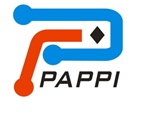 |
| ..:: SUBMISSION ::.. |
 |
| ..:: JOURNAL TEMPLATE ::.. |
 |
| ..:: ADDITIONAL MENU ::.. |
| Editorial Team |
| Peer Reviewers |
| Focus and Scope |
| Peer Review Process |
| Publication Ethics |
| Privacy Statement |
| Copyright Notice |
| Author Guidelines |
| Indexed By |
| Author Fees |
| ..:: TOOLS ::.. |
 |
 |
|
|
| ..:: CONTACT ::.. |
 |
| E-mail : [email protected] |
| ..:: INDEXED BY ::.. |
| ..:: ISSN ::.. |
 |
| ..:: JURNAL INI BEKERJASAMA DENGAN PAPPI ::.. |
|
PERKUMPULAN AHLI PENJADWALAN PROYEK INDONESIA |












